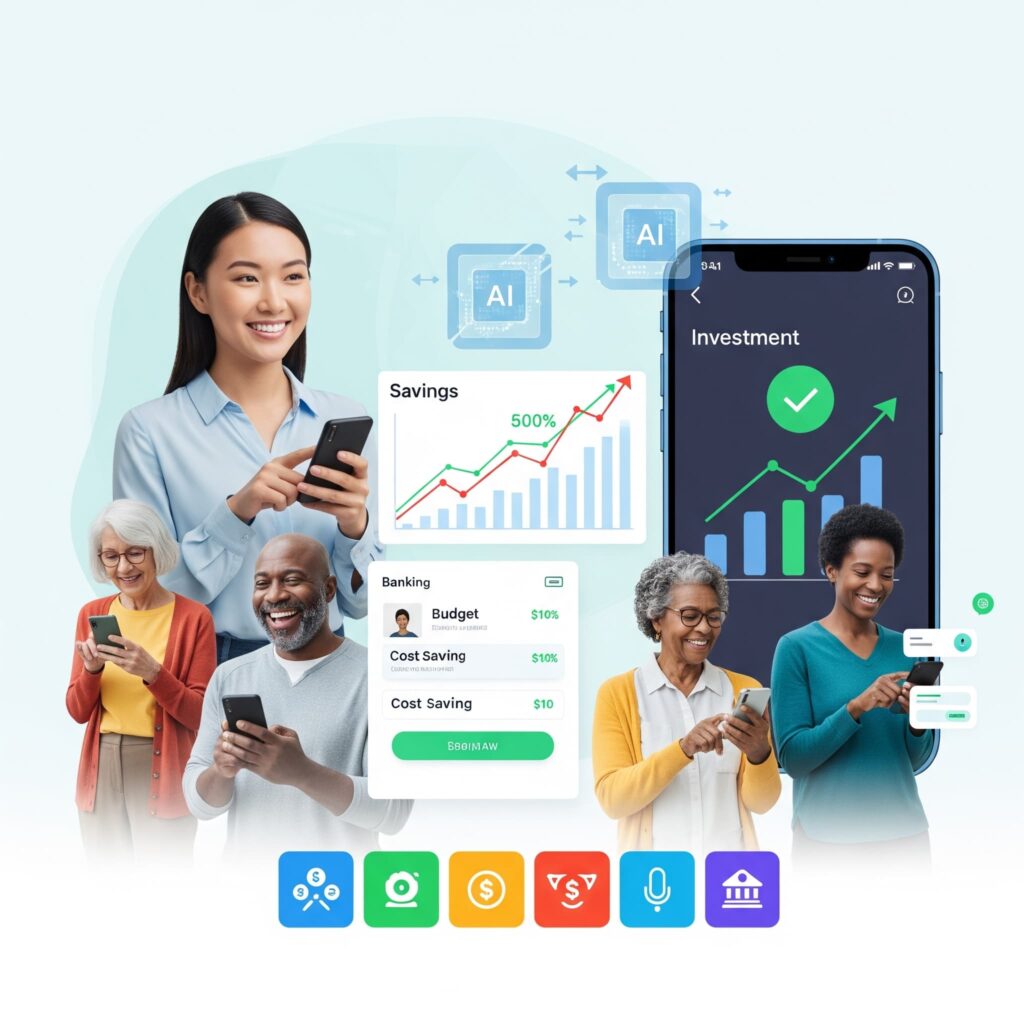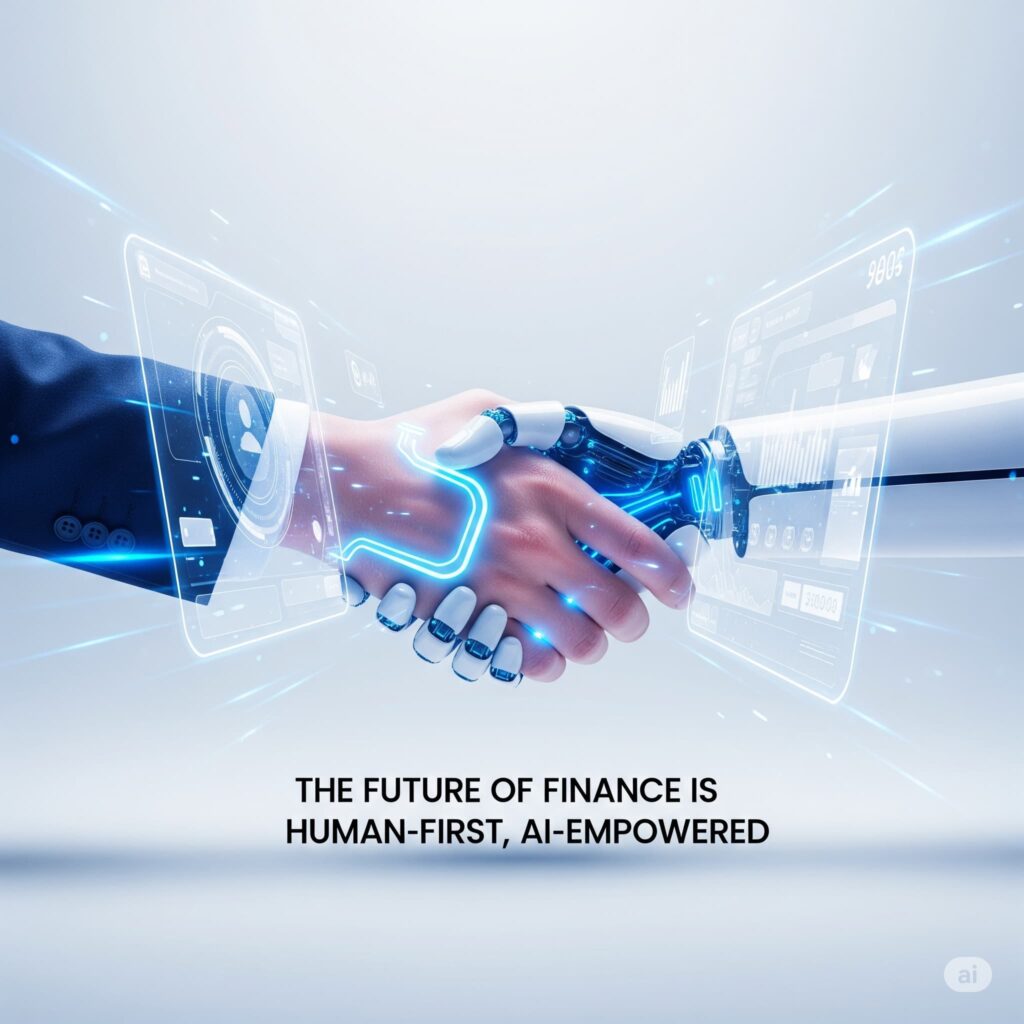Imagine walking into your bank and having the teller greet you by name, hand you a custom financial report, recommend the perfect savings plan, and even flag a suspicious transaction before you notice it. Now, imagine all that happening—not in a physical bank branch—but on your smartphone. That’s the power of AI-powered personalisation, and it’s completely reshaping the banking landscape in the United States.
The Problem Before AI-Powered Personalisation
Before AI-powered solutions emerged, banking was often rigid, impersonal, and reactive rather than proactive. Customers were typically treated as generic account numbers rather than individuals with unique financial goals, behaviors, and needs.
Long Wait Times and Cookie-Cutter Services
Historically, banking services were designed with mass production in mind. One-size-fits-all checking accounts, credit card offers, and loan terms were the norm. Customers had to navigate confusing websites or wait in long lines at branches just to complete basic transactions.
Limited Insights and Poor Customer Experience
Banks lacked the tools to truly understand their customers. Insights into spending patterns or financial behaviors were shallow at best. If you wanted advice, it often came from a brochure or a time-pressed employee, not a data-driven assessment of your actual needs.
High Risk of Fraud and Errors
Without advanced data analysis, fraud detection relied heavily on customer vigilance and occasional audits. Mistakes in transaction processing or risk assessments were more common, leading to customer dissatisfaction and financial losses.
How AI-Powered Personalisation Transformed the Industry
The rise of artificial intelligence has introduced a new era for banking. At the heart of this change is personalisation, driven not by human guesswork, but by algorithms analyzing millions of data points in real time.
What Is AI-Powered Personalisation?
AI-powered personalisation in banking means using machine learning algorithms and data analytics to deliver tailored financial experiences. This includes:
- Customized product recommendations
- Predictive analytics for spending and saving
- Real-time fraud alerts
- Smart chatbots and virtual assistants
- Dynamic credit scoring and loan approvals
It’s like having a financial advisor in your pocket, available 24/7, who knows your financial habits better than you do.
Enhanced Customer Experience
AI enables banks to engage with customers in a highly personalized way. For example, if your monthly spending suddenly increases, your banking app can flag the trend and offer budgeting tools.
According to a 2023 McKinsey report, 71% of consumers now expect companies to deliver personalized interactions, and 76% are frustrated when this doesn’t happen (McKinsey).
Fraud Detection and Security
AI-powered systems can analyze unusual patterns across millions of transactions and flag anomalies in seconds. JPMorgan Chase, for example, uses AI models to monitor transactions for fraud with incredible speed and accuracy.
The Federal Trade Commission reported that consumers lost nearly $8.8 billion to fraud in 2022—an increase of over 30% from the previous year (FTC). AI is helping turn the tide.
Smarter Credit Decisions
Traditional credit scoring often fails to capture the full financial picture. AI can incorporate alternative data such as rent payments, mobile phone bills, and even social behavior to offer a more accurate assessment of creditworthiness, especially for underbanked populations.
This innovation supports financial inclusion and offers more people access to loans and credit, tailored to their actual financial behavior.
The Real-World Impact of AI-Powered Personalisation
AI-powered personalisation isn’t just a shiny feature for tech-savvy millennials. It’s changing the game for everyday Americans, businesses, and even the broader economy.
Everyday Banking Made Simple
No more puzzling over bank statements or tracking bills manually. Apps like Chime and Ally use AI to automate savings, analyze spending patterns, and give helpful nudges toward better financial decisions.
If you tend to overspend on weekends, your app might suggest a budget adjustment every Friday. If your paycheck lands, it can automatically allocate a portion to savings without you lifting a finger.
Helping Small Businesses Thrive
For small business owners, AI-powered banking tools streamline everything from payroll processing to cash flow forecasting. AI can flag upcoming tax obligations, recommend business credit options, and even help prevent overdrafts.
This kind of proactive support helps businesses stay financially healthy, especially in uncertain economic times.
Boosting Financial Literacy
Some banks now offer AI-driven educational tools. These platforms adapt to your financial habits and goals, giving personalized advice on debt reduction, retirement planning, or investment strategies.
Imagine an AI that helps you learn, plan, and grow—not just transact.
Challenges and Ethical Concerns
As with any powerful tool, AI-powered personalisation in banking comes with challenges.
Data Privacy and Consent
To personalize services, banks need access to a lot of personal data. This raises concerns about data protection, consent, and surveillance.
Clear communication and robust security protocols are crucial for maintaining customer trust.
Algorithmic Bias
AI models can unintentionally reinforce existing biases. For example, if historical lending data is biased, AI might replicate those patterns, unfairly denying loans to certain groups.
Banks must audit their models regularly to ensure fairness and transparency.
Over-Reliance on Automation
While AI enhances service, over-reliance on automation can reduce human empathy in customer service. There’s still a need for human judgment in complex or emotionally sensitive financial situations.
Practical Takeaways: What Can You Do?
Whether you’re a customer, business owner, or finance professional, here’s how you can benefit from AI-powered personalisation:
- Explore AI-driven banking apps: Look for tools that offer budgeting, savings automation, and smart alerts.
- Understand your data: Know what data your bank collects and how it’s used.
- Give feedback: Help your bank improve AI services by sharing your experiences.
- Stay informed: Follow updates on digital banking trends to make better decisions.
Final Thoughts: The Future Is Personal
Banking is no longer about forms, queues, and vague advice. With AI-powered personalisation, it’s becoming about you. Your goals, your habits, your needs. This shift holds incredible promise not only for convenience but also for greater financial empowerment and inclusion.
As we embrace this transformation, the key will be ensuring that technology serves humanity—and not the other way around.
How do you feel about your bank knowing so much about your habits? Is it helpful or too much? Let’s talk.
References:
- McKinsey & Company: The value of getting personalisation right
- Federal Trade Commission (FTC): 2022 Fraud Reports
- JPMorgan Chase AI Initiatives: Reuters
- World Bank on Financial Inclusion: World Bank






